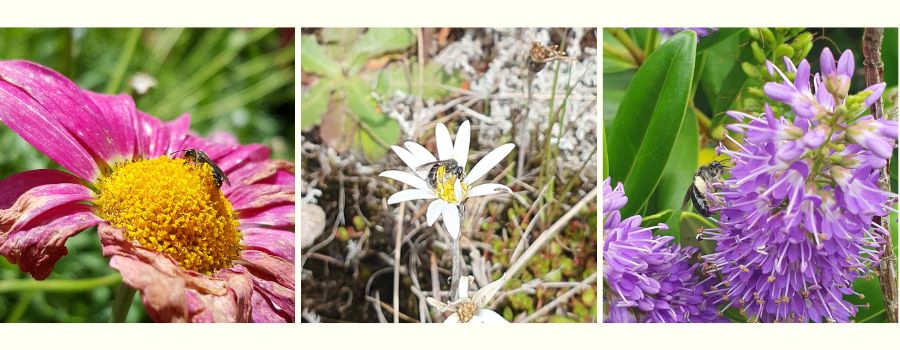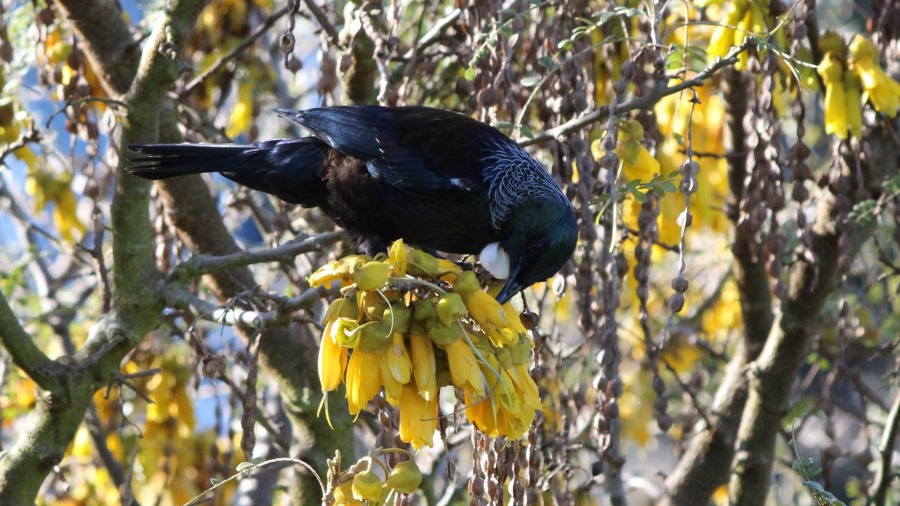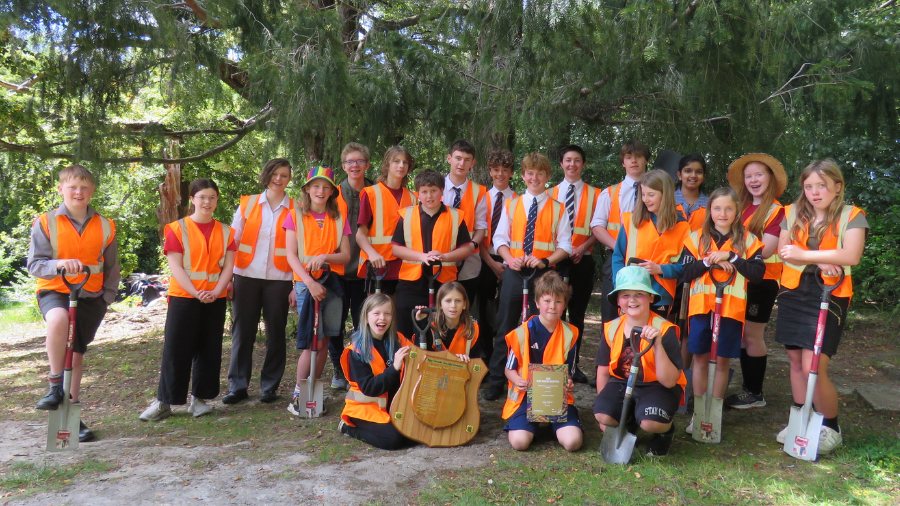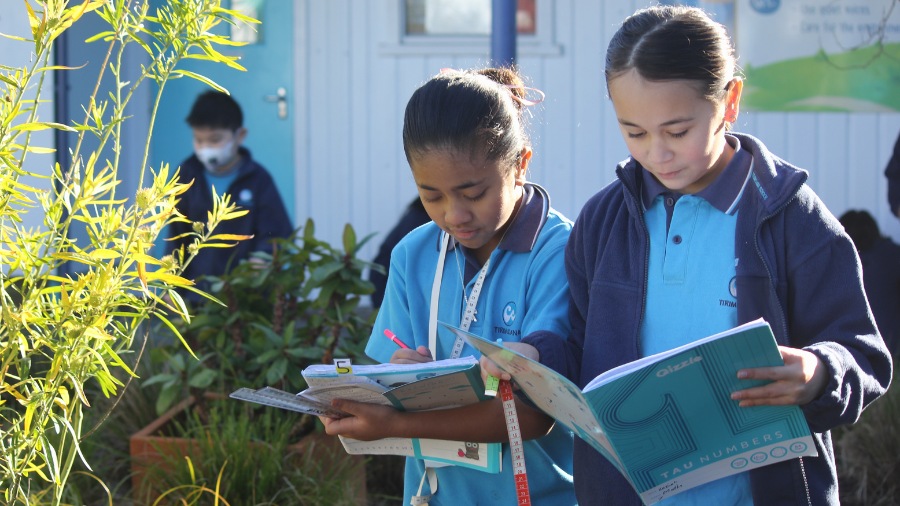As Kōanga brings longer days and new growth, what are your ākonga noticing in nature?
Spend some time outside looking at plants, insects and birds and notice changes in your local waterways as the new season arrives. Note the tohu or signs of spring in your local area and discuss what these changes mean for people and other animals.
Ka tangi te pīpīwharauroa, ko te karere a Mahuru
If the shining cuckoo cries, it is the messenger of spring
Use the changing seasons as an opportunity to learn more about the maramataka, with resources from Te Papa and Science Learning Hub, or read this story from Enviroschools about how Parihaka Kindergarten are aligning the maramataka with their Enviroschools kaupapa.
For some beautiful images and information about native plants that are flowering in spring, read this article from Trees That Count. We also love the Department of Conservation's nature connection seasonal slideshows, available in English and te reo Māori, exploring native animal behaviours, patterns and changes throughout the seasons.
Celebrate Bees
Mahuru | September is Bee Aware month and is a great time of year to learn about and take action for bees. You can continue this learning throughout spring and into summer.
%2520(1).jpeg)
Bee Awesome He Pī Mīharo is a social enterprise passionate about the environment and bees. They work with schools in the Waitaha | Canterbury region and love teaching tamariki all about our precious little pollinators in a fun hands-on way.
Bee Awesome have kindly shared this fun activity, the Nectar and Pollen game, and also have a great selection of articles on their website.
Garden to Table also have a range of pollination resources and have shared two activities on their website, Waggle Dance and Positive Pollen, which can be downloaded here.
Students at Whareorino School were inspired to take action and made a downloadable poster to raise awareness about bees. You can read the full story and download their poster in this Enviroschools story.
Citizen Science: Record observations of ground-nesting native bees!
Many of the native bee species in Aotearoa nest in individual holes in the ground. You can often find a whole community of these bees (which are often mistaken for flies) in clay banks or sandy areas facing the sun. If you find a community of nesting bees, you can participate in a Citizen Science initiative mapping the locations of these nests. First, take a photograph of the nesting area and try to get a photo of some of the bees too. Don't worry - those tiny bees won't sting. Then upload your images to iNaturalist where you can add the observation to the iNaturalist Project "Ground Nesting Bees."
Learn more about our native bees and how to use iNaturalist from the downloadable resources available on the University of Otago's Jandt Lab website here.

Sow Seeds for Flowers and Food
Spring is a great time to sow seeds and think about your school gardens. Involve ākonga with the whole process by using the resources below to hep research plants that provide a range of food for people, bees, moths, butterflies, birds and lizards, throughout the seasons. This includes planting a mixture of pollen and nectar plants, including native plants, and allowing some areas to go wild! Weed flowers such as dandelions, daisies, clover and buttercups are also an excellent food source for insects, including our native bees.
How can I help save the bees? includes a wonderful selection of tips and resources to inform your planting, thanks to Dr Jenny Jandt from the University of Otago.
Moths and Butterflies of NZ Trust also has a range of great resources, including advice about what to plant to provide food and habitat for moths and butterflies.
Sunflowers are easy for students to grow, they help regenerate the soil and provide a fun way to integrate numeracy (measuring height, counting seeds), art and science. Read about Porirua School's outdoor classroom project and sunflower garden in this Enviroschools story.
Start a conversation with whānau and your local community to find out about local seed sources, or consider organising a seed swapping event. We also love the idea of selling seeds as a healthy, low waste fundraiser for school projects and programmes.
Help Nesting Birds

Birdsong is one of the best things about the start of spring and you will start to hear and see birds that have been gone over the colder months. Listen for the call of the secretive Pīpīwharauroa | Shining Cuckoo, as a sign that kōanga has arrived.
Watch birds collecting things to make their nests and resist the urge to tidy up loose twigs, leaves and other natural items in your garden and school grounds. Instead focus on collecting any litter around your neighbourhood, so birds don't end up using plastic in their nests. You could organise or take part in a local clean up event, such as those organised by Keep NZ Beautiful or Sustainable Coastlines.
An important way to protect birds and their eggs is by controlling introduced predators in your school or kura. You can find helpful resources on the Predator Free NZ website, along with information and learning programmes on the Zealandia website.
Spring Events
Click on the event titles to visit each website and find out more, including resources and local event details.
Bee Aware Month in September
Conservation Week from Sept 1 - 7 with the theme 'Take Action for Nature'
Te Wiki o Te Reo Māori from September 14 - 20
Bird of the Year runs from Sept 15 - 28 this year
Keep NZ Beautiful Clean Up Week from September 19 - 25
Spring Equinox is on Monday September 23 - the day and night length are equal on this day.
Mental Health Awareness Week from October 6 - 12. Sparklers have lots of activities on their website that use nature to help improve wellbeing for ākonga.
Recycling Week is from October 20 - 26 and offers fun activities each day to help with waste minimisation.
Outdoor Classroom Day is on Thursday November 6. Join the global movement to make time outdoors part of every child’s day.
As we head into summer, don't forget about the annual Bug of the Year competition run by the Entomological Society of NZ over December - February.
Acknowledgements
Thanks to Lesley Hurst from Bee Awesome He Pī Mīharo, for providing the beehive images and for contributing your resources and ideas to the creation of this Spotlight.
Thanks to Dr Jenny Jandt from the University of Otago for sharing your native bee images, citizen science project and all the resources available on the Jandt Lab.






